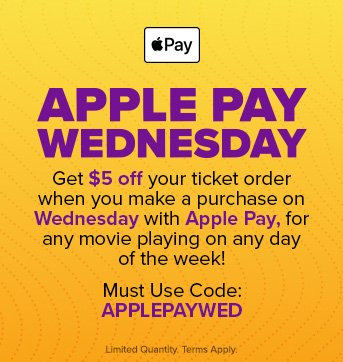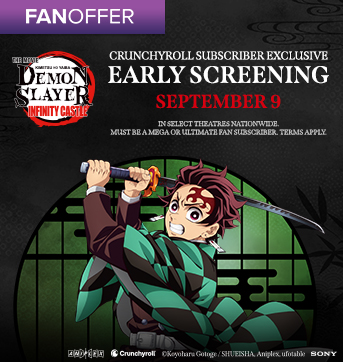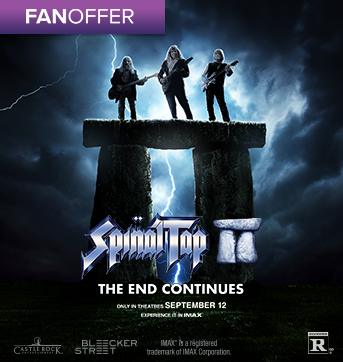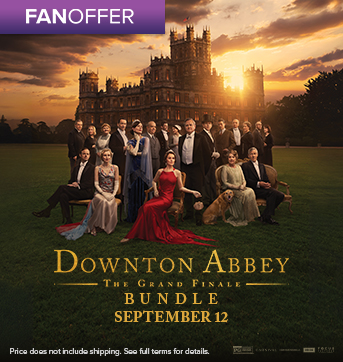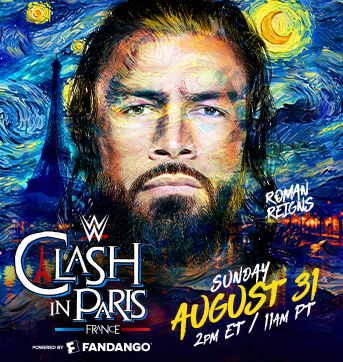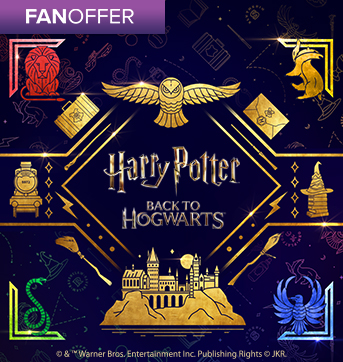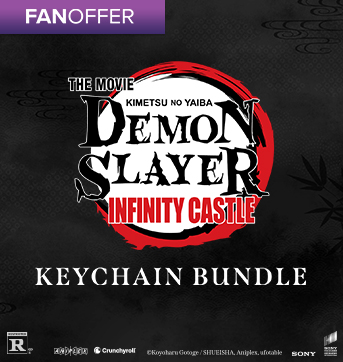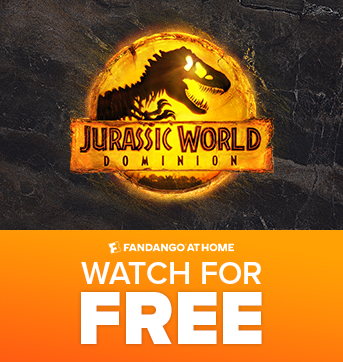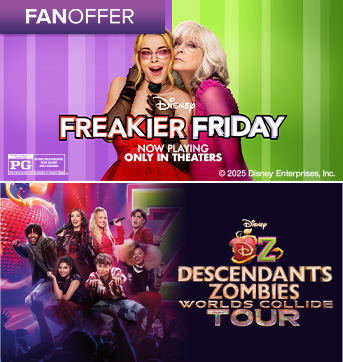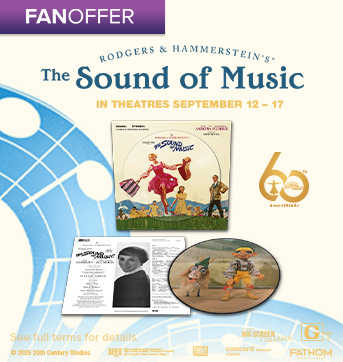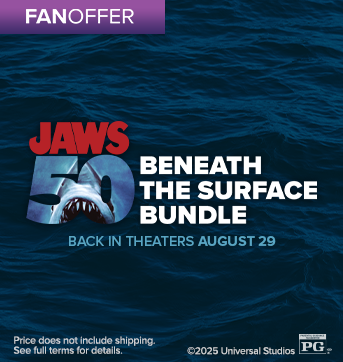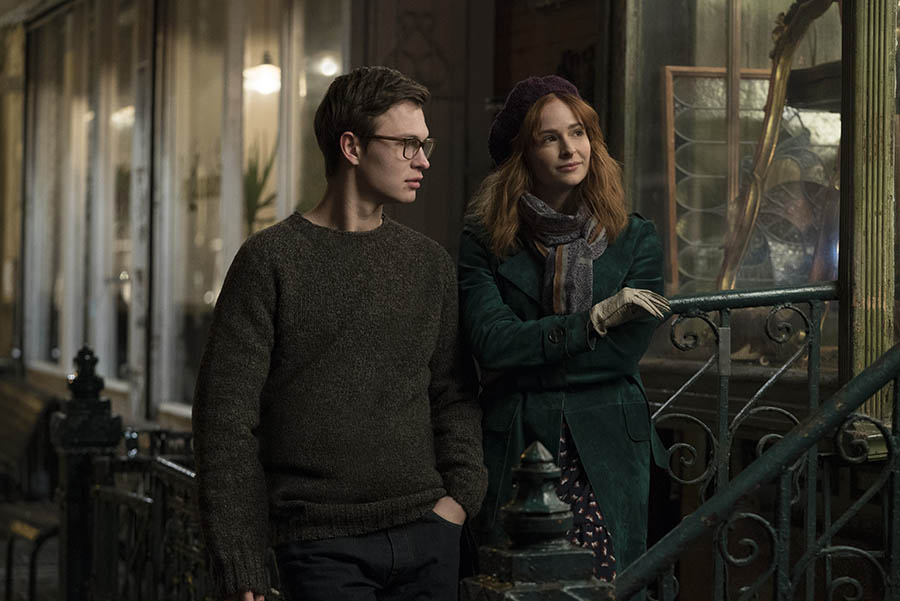
Roger Deakins is one of the most acclaimed cinematographers in the history of cinema. He’s one of the few cinematographers known outside of just cinephiles, having carved out his name alongside the Coen Brothers for every film of theirs from 1991 (Barton Fink) through 2010 (True Grit), including such classics as Fargo, The Big Lebowski, O Brother, Where Art Thou? and No Country for Old Men. Recently, Deakins has jumped into massive canvas entries into the iconic franchises of Bond (Skyfall) and Blade Runner, with Blade Runner 2049 winning him his first Oscar after 14 nominations.
Deakins was in Toronto to receive Variety’s Artisan Award, and also had a film he shot, The Goldfinch, premiere at the Toronto International Film Festival. As you’ll see in the interview below, Deakins is remarkably humble for someone who’s at the top of his field, and when he accepted the award on Monday, September 9, he had his wife and between 40 and 50 crew members on stage with him. Prior to him accepting the award, we sat down with the legend to talk about which film in his filmography stands out to him as his finest achievement, which cinematographers from the past had inspired him, and about a script that he wrote in the 1990s that he’d still love to see get made.
Fandango: You're receiving a Lifetime Achievement Award here at TIFF, as well, so I wanted to ask a few questions about your long career. You're very modest, but I was wondering if there's any particular sequences that you're most proud of that you've shot?
Deakins: I'll say it's not really the sequences, it's the film as a whole. It's sort of...sometimes disappointing. You might've done a sequence that you think really works photographically for that particular part of the film, and then something else you don't quite succeed on. It's about the whole thing really. There are certain films I think of as more of a piece than others.
I think The Man Who Wasn't There was a film that really held together all its components, created this part of world that was unique, and I really love that one. I mean, there was a few of them, not just that one, but that one stands out the most to me.
Fandango: I’m glad you bring that one up in particular because when that came out, that movie was so beautiful — it was the first time I started to watch movies based on cinematographers, so you did that! The hubcap that rolls down the road and eventually becomes a doctor’s light in surgery. I've been obsessed with cinematography ever since. I'm happy you mentioned that one.
Deakins: Well, Joel and Ethan (the Coen brothers) are very visual like that, yeah.
Fandango: At the start of your career, what were some cinematographers or photographers or filmmakers who inspired you?
Roger Deakins: I mean, I suppose I'd been more inspired by European, Russian and Japanese films really than I have by American cinema or British cinema, but I have two big influences. I think they’re Connie Hall and Ozzie Morris (Conrad L. Hall and Oswald Morris), two cinematographers. Apart from them, huge influence from the Europeans, Vadim Yusov, Raoul Coutard, but I mean — I think in Britain it was Ozzie Morris, and America was definitely Conrad Hall.
Fandango: When you say, Ozzie Morris, I presume you mean, Oswald Morris?
Deakins: Yes, yes, Oswald. Ozzie, to me. We used to trade letters about each other’s work. I operated the camera and he thought that was terrible. I could be quite good at my job if I gave up operating, he said. I always had a back and forth about that and it was really funny.
Fandango: What was his reasoning for that and what's your reasoning for wanting to—
Deakins: That's the world he came from. He was a director of photography. He wasn't a camera operator. That's how he saw it as separate functions, but I can't see how you separate the two. Certainly, the way I work, I couldn't. It would be impossible to not operate the camera myself.
Fandango: How do you work on a film’s composition with filmmakers? Are you bringing your ideas to them, or collaborating or just doing the best on what they say they want? I guess a little explanation of your cinematography process — how you work on projects.
Deakins: Again, it depends on the director and director's approach. I mean some films, like with the Coen brothers, you basically storyboard the whole thing, and sometimes I'm involved in that process early on or sometimes I can come into it after a couple of passes or whatever. On other films, like Jarhead with Sam Mendes, we didn't. We talked about the sets and what we needed to make the scenes work. Then we went in, we didn't rehearse, I put the camera on my shoulder, and we started shooting. The process can be very, very different. That's the two extremes. Usually, like The Goldfinch, you spend a long time. I like to spend quite a time with a director just talking through the script and the different scenes, and maybe how you can visualize them, maybe how you can lose dialogue or something, and do something visually.
Then, it gradually evolves as you go scouting locations, and you talk to the production designer and everybody comes in with ideas. Gradually, you hone down on what you're going to do. Then hopefully, whatever way you start with it, storyboards or not, still on the day you want to be open to that instinctive kind of reaction to what the actors are doing.
Fandango: What's harder, maintaining a color palette throughout — like I'm thinking of kind of the orange hue in Blade Runner 2049 — or the kind of very elaborate sequences, like the hula hoop in Hudsucker Proxy?
Deakins: [laughs at the mention of the hula hoop scene] Every film's a challenge and you set your own bar in a way, don't you? It can be a low-budget picture, and you think that's a challenge because you're trying to do something that you don't have the money and time for, or it can be a big-budget picture, but then the wish list, the ambition is bigger. With Blade Runner, it still felt like doing a tiny picture and you're scrambling around and you're working Saturday and Sunday doing pre-lights, so that's pretty much the same. They're all very stressful.
I go through the script with the directors, let's say, and you figure out what their ambition is, and then you go through the schedule, usually with the First Assistant Director and figure out how to make the best of the time you're allotted to shoot the film. Then you go through it with your grip and your gaffer, and I do diagrams of all the lighting I want to do, and I say, 'I want this there.' When the camera comes around here, I need another light here to do this. Then we go to this set and then we got to fly to Amsterdam, and in Amsterdam we need to do this. You know what I mean? I end up with a book, or now on a computer, I end up with a whole list of diagrams that we send to everybody and say, this is the plan. But then maybe you get to the day you want to change it a bit. You've got to be open to that as well. But, I really believe in planning stuff out.
Fandango: So even the biggest films and the most elaborate with all these locations, they still feel small to you and you approach it like you're making an independent?
Deakins: Oh, I think so. There was a photographer...when I was at art college or film school — who was it? I forget now. Somebody said if you can photograph the human face, you can photograph anything. I think that really stuck with me, because I think that's true. Especially in film, that seems to me what it's really about. You're communicating somebody else's kind of world and perspective to the audience, and if you can actually bring out something that's inside somebody's character from visually how you portray them, then yeah.
Fandango: What are some technological advancements over the last few years that you feel like has made your job easier — or maybe even harder?
Deakins: I think the biggest advantage, the biggest progress, I think, is obviously digital technology. I know a lot of cinematographers don't like this, but I like the fact that I can be on set now with a DIT on a monitor that's calibrated, and I can discuss with the director what that image actually is. I can discuss if the silhouette really is a silhouette or if it's too much. The director says, 'no, that's too much' or not. I think that's a real advantage to the communication and the collaboration between me and a director. I think that's the biggest change in the technology.
Obviously with digital cameras now, the size of the camera is having a big effect. I think in the next few years it's going to be greater effect when you get higher resolution cameras that you can walk around with as though it's a consumer camera that's going to change high-end filmmaking, whatever that is, low-end really.
Fandango: Have you watched any of the films filmed on cell phones? Like from Soderbergh or Sean Baker or anything?
Deakins: Yeah, I mean I shot part of a film on a cell phone once. It was In the Valley of Elah, a number of years ago. You know that technology changes and it allows you to do things that you couldn't.
I mean, you look at what Ozzie Morris did when he shot from a BNC Mitchell, and rigged big lights and all that. I mean, it's unbelievable what they did. I mean, we've really got it easy now in the kind of access to technology, drones, little cameras, stabilizers, remote heads — I mean the whole bit. It's a totally different world really, so many ways to send a camera up, in, back or down.
Fandango: You’ve mentioned Oswald Morris a number of times. What are some films that he shot that really influenced you or spoke to you?
Deakins: Moby Dick, The Spy Who Came in from the Cold, The Moulin Rouge, the original one. A lot of early John Huston films. I like John Huston films.
Fandango: The Pumpkin Eater is one that comes to mind for Morris.
Deakins: Pumpkin Eater, yeah, Jack Clayton.
Fandango: Who's a director that you haven't had a chance to work with that you would like to?
Deakins: Most of them are dead, I'm afraid. Andrei Tarkovsky, that would be nice. Andrey (Zvyagintsev), Loveless. I can never pronounce his name. He’s the guy that did Loveless and Leviathan, but he works with Mikhail Krichman, who's brilliant. What they do, it's like, yeah, I'd love to do it, but on the other hand, I love to see their movies and what they do together. The two of them, it's amazing. So no, it wouldn't be the same if I did it anyway. You know what I mean? It's like...yeah, no.
Fandango: Who are some younger cinematographers that you have your eye on and that you think are doing doing interesting work?
Deakins: Obviously, there's guys like Bradford Young, but he's been doing it quite a while now. There's so many cinematographers that are really good and have a different way of doing things that I'm not sure. You know, I’m probably more simple than everybody else, because I'm a very simple person. I think my lighting's actually much simpler than the other stuff I see.
Fandango: A lot of cinematographers are wanting to move into directing…Did you ever have a desire to—
Deakins: I think Rachel Morrison is doing directing now. So is Charlotte...
Fandango: Charlotte Bruus Christensen?
Deakins: Yeah, I think she's directing something in the UK now. Twenty years ago, I kind of wrote scripts and talked to a few people, but it's too much time between working on set, isn't it really? I think I'm better at doing what I do than I would be at directing really.
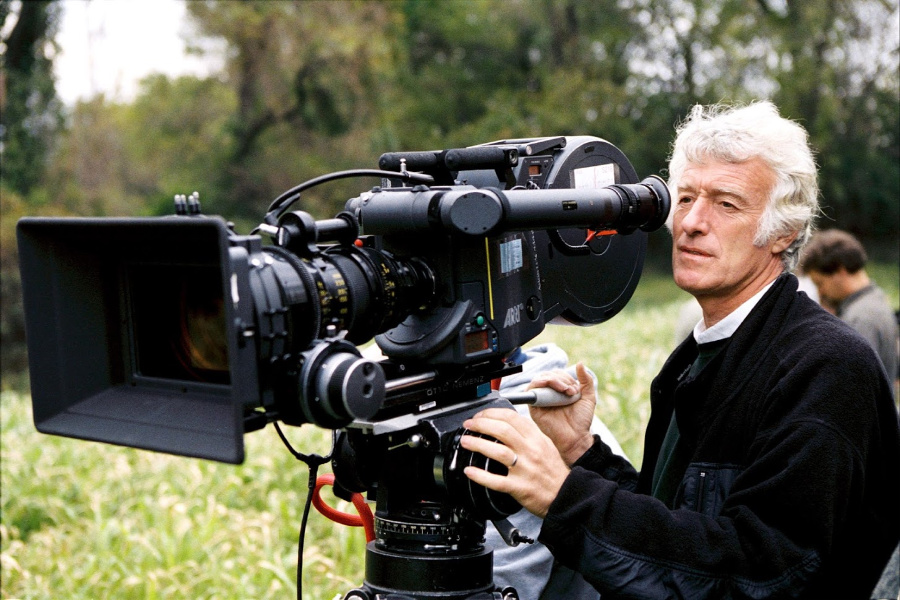
Fandango: What type of script did you write?
Deakins: A very dark first World War piece set in Africa that I can't imagine anybody would ever finance, but it was pretty damn good. It's based on a true story. It's a pretty remarkable story and I still think about it. I'd love to see it as a movie.
Fandango: When did you write that?
Deakins: 1990? I mean, I’d love to see it still.
Fandango: What drew you to this particular project, The Goldfinch?
Roger Deakins: It's the story. I mean, and John Crowley, but the story first. I mean I initially read the book and then heard they were making a film, so I asked my agent kind of, "Look, just put my name in the hat."
Fandango: Joel Coen is going solo for his next movie, Macbeth—
Deakins: I believe he is, yeah. I hope they work together again soon.
Fandango: How did you work with them as a team? Is there one brother that you worked with more on set?
Deakins: It was interesting when I first started working with them, I wound them up one day because sometimes they sort of deal with me in turns and be like a tag team, come up and talk to me as I was setting a camera. I mean, usually they were totally in sync, all the time, except for this one time. One time, over years and years. One day Joel had said something, "oh, I think we should be on a longer lens." He went away and then Ethan came back and said, "Yeah, but we should be much wider, on a wider lens." They kept doing this for ages and then Joel will come back and he say, did we just say we wanted it to be longer? It took a while before they realized that they'd been contradicting each other. I'd just say, "Well, if you say so” and do as I was told. But that’s the only single time that they both didn’t have the same visual idea on set. They are so in sync. I mean, I hope they work together again and direct together again, but I'm not sure whether they're going to.
Fandango: Which film was that?
Deakins: That was Barton Fink, when I first worked with them. I was really unsure about the working practice, and I almost didn’t do it, but actually, they were really great because they brought me in like five weeks, I think, prior and we spent all this time doing storyboards together. All I know is, it was a really great process. I had a really good time. And so, we worked together a lot.
Fandango: You mean you were unsure of them at first because they are two people directing?
Deakins: Yeah. I didn't conceptualize how that was going to work, and I hadn't worked in LA much before. About a week, I think, or something, and so there was a lot of first-time things for me when I was working with them on Barton Fink. But then, yeah, then we’ve had quite a long relationship.
Fandango: I could talk about the Coens all day, but let’s get back to The Goldfinch and the explosion in the art gallery. I guess, can you talk about wanting that to be impactful, but also kind of aware that terrorism is a real thing and you don't want to linger too much?
Deakins: It’s what I was saying earlier about faces. It's really about Theo (Oakes Fegley). When John was talking about it, he said, "It's got to be about Theo. It's the whole film. In a way, the whole film is Theo's memory. It's like going through his whole memory, as he's in the hotel room, but this moment in particular is his childhood memory. It's like, what do you remember from some traumatic event? It's not a great thing in Technicolor — a huge explosion and see the whole of the Met blowing up. It's not — it's the little details; it's those little human details that I think kind of resonate more. So that's the way we went. And that’s what we’re always trying to add.
But there was a particular thing, go back to that scene, the aftermath of the bombing, I said, "Instead of dropping focus with the mother, why don't you pull towards us? We want it to go out of focus."
Fandango: People have been wanting you to win an Oscar for many years. You finally did (for Blade Runner 2049). Does anything change when you do?
Deakins: Only you don't leave and have all these people saying, "Oh, I'm so sorry. How does it feel, you lost?" Well, I never lost, in my opinion, because it’s a film being recognized. It's such nonsense. I mean, it's the work you do, and the films that I love — I mean, very few of them have ever been even nominated. I don't see Stalker up there on the list of Academy Awards, do you?
That would be way up there, for me. Vadim Yusov. I mean you don't often hear his name but he’s really one of the best and he didn’t have an Oscar, so what does that mean? Don’t worry about it.
The Goldfinch is in theaters this Friday, September 13. Get your tickets!
1917, also shot by Roger Deakins, arrives in theaters this December. Sign up for a FanAlert to find out when tickets go on sale.

